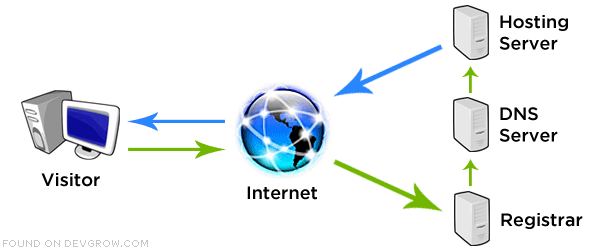The 'HOW TO' in Web Hosting
When you have chosen to make your mark on the web and create a website, next step is to make sure that you know clearly as to how it is actually implemented. There are options to choose from at each step depending upon the kind of quality, security and performance you want from your website.
The basic steps involved in getting a website hosted are: choosing and registering a domain name and choosing a web host. Most web hosts provide some form technical support in hosting.
Begin by choosing a valid and appropriate domain name. A domain name should reflect the personality and nature of business of your website. Much like addresses define and identify a particular physical space (like home or office), a domain name is actually numerical address for your website; for the sake of convenience names (like xyz.com) are used instead of actual numerical website address (xyz.com may actually translate as 234.789.34.5 in real life). Getting a domain name registered means making sure that a certain IP address will lead only to your website. ICANN registers all domain names.
Registering and acquiring a domain name has to done through domain registrars. Domain names can be acquired for one or multiple year contract.

Then choose a suitable web host for your job. The web host will ‘host’ or provide you an allocated space on the internet to run your website. The host stores your files, stores files of each of your visitors (reader/customer who reaches the website address) and takes care of various other features. Basic websites can very well function on free web hosts but such websites are loaded with irrelevant ads all the time (this is how web hosts earn money from free hosting services), the user might get ‘loading error’ pages etc. For a professional website, choose a paid hosting option. The advantages of paid web hosting outdo that of the free service. Each paid service generally allows the user to change and customize the UI according to their needs; if you want a food blog to have appetizing background image or a shoe selling websites to have each tab or cursor in shape of a shoe etc. it can be done. Storage space is much more; which means you can store much bigger files like videos, large images, more number of images, catalogues etc.
very easily and on click of a button. Bandwidth is high in paid option, which means higher traffic can be handled easily and speed will not be compromised.
Users who opt for paid web hosting must see whether the host is providing email support, Autoresponder facility (automated replying facility to any comment, email or sale done by a visitor to your website), SSL (very important for ecommerce), general website features like blogs, forums etc., email forward capability, customized domain parking page etc.
Make sure you choose a good web hosting plan that satisfies all of your basic web needs (if you are a blogger your basic need is an appealing look, if you are an ecommerce owner your basic need might be a very hassle free customer navigation), and gives maximum technical support. Always choose an option keeping in mind that one might want to extend the functionality into something that is much more detailed than the current website version.